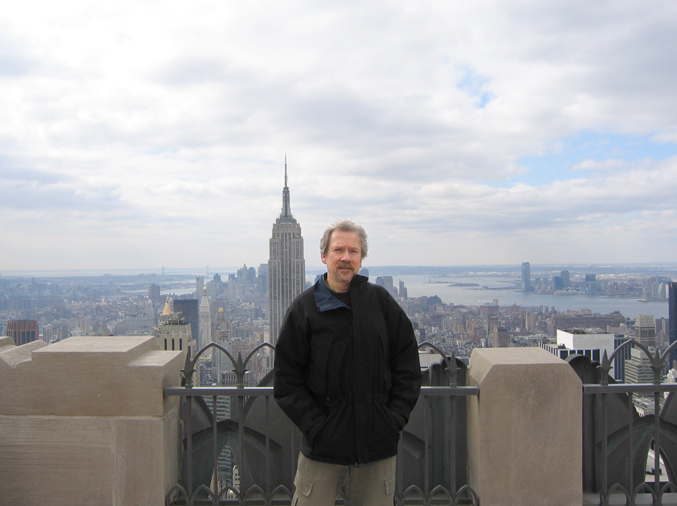
The Artist's Statement |
"I am fortunate enough to live in a city through which almost all the cultures of the world flow and intermingle. Yet I also live in a national culture that is relatively unaware of its own roots and origins. Despite the wealth of documentation from ancient Mesopotamia that has come to light in the past century and a half, as a society we remain relatively unaware that it is the pre-Classical source of our modern ideas of law, religion, writing, grammar, accounting, astronomy, etc. Thus it is a very exciting form of expression for me to create art in New York City that links us with our ancient cultural roots. "Using the traditional Near Eastern carpet making arts as my medium of expression is particularly powerful. It was the wool industry that powered the Mesopotamian economy, just as it powered, for example, the Florentine and British economies in more recent centuries. And the original technologies used for dyeing and weaving later developed directly into our modern photochemical and computer industries. "The wools most prized in Near Eastern carpet weaving are unfamiliar to most Westerners. They are lustrous long wools that are highly reflective and seem to glow. The visual appearance of a finished weaving changes greatly depending upon the angle of the light hitting it. Furthermore, I am particularly drawn to using the undyed wools from colored sheep which range from off-white through platinum and silver, through greys to black. "I also love to work with the classic ancient dyer's palette of natural indigoes, crimsons, golds, etc. The colors of both the undyed and dyed wools are distinctive, complex, and rich. They play off of each other in visually dynamic ways. This aesthetic tradition has an entirely different way of seeing light and dark, and has a unique spectrum forgotten by the modern world since the commercial use of synthetic dyes began in the mid-19th Century. "The inherent nature of the flatwoven technique favors the creation of fascinating abstractions and patterns that are almost musical in their repetitions and rhythms. Looking at the 'abrash' or natural striations in a plain color field is one way to experience how this early art form combines utter simplicity and infinite complexity. "The ability of weaving to bear multiple layers of meaning and appearances is unique. For example, the word 'subtle' itself is a technical weaving term from 'sub telix,' Latin for 'beneath the weave.' As an art form whose cultural roots are relatively unfamiliar to western culture, my use of flat woven carpets as my artistic medium and expression puzzled many people. In the 21st Century, however, the significance of this art form to our modern interconnected lives becomes self-evident. "Throughout history carpets were created as functional necessities: It was upon carpets where people were born, where they slept and dreamed, prayed, made love, conceived, gave birth, where they convalesced when ill, and also where they died. As such, the art work I create includes prayer carpets, carpet beds, and flying carpets. Can there be a more powerful artistic metaphor for the human condition and its various states of consciousness? "These are but some of the many things I see and feel in this prized, ancient tradition as I focus on create engaging, beautiful contemporary works of expressive woven art via the magic of the ancient craftsmanship. I encourage you to look again and again, and enjoy them, and then look yet again, reflecting upon where we came from, and where we are going." Stanley Bulbach |